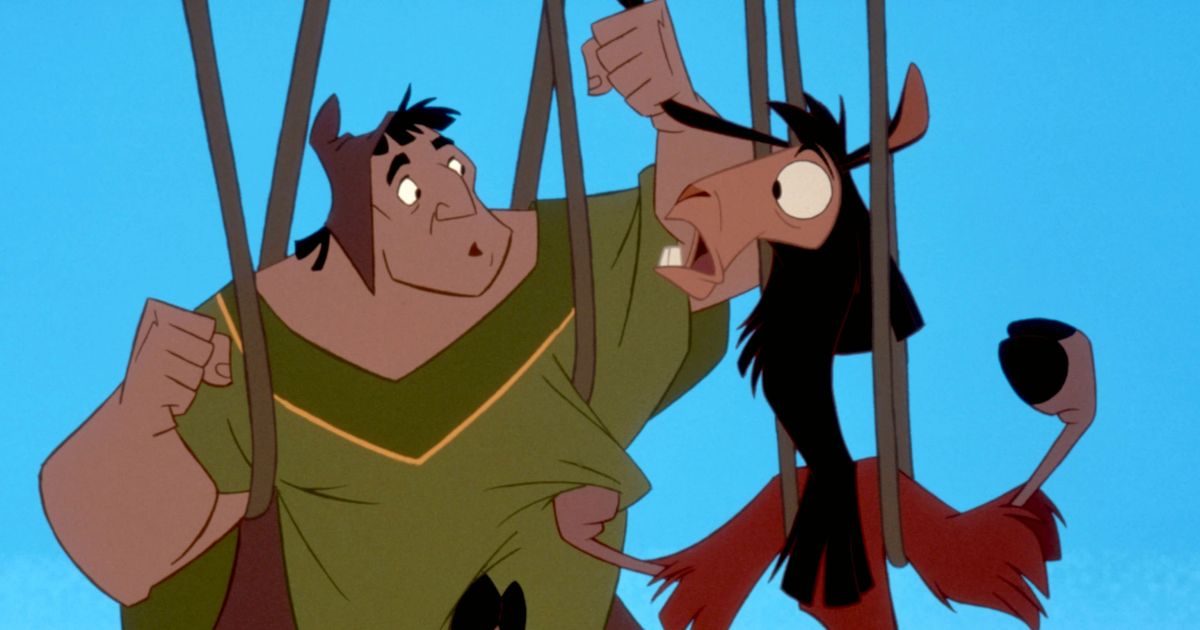The Making of The Emperor’s New Groove: An Animated Odyssey
Concepts de base
The author delves into the tumultuous journey of creating The Emperor's New Groove, highlighting the transformation from Kingdom of the Sun to a comedic masterpiece, shedding light on the challenges faced and decisions made.
Résumé
The article narrates the intricate tale behind The Emperor’s New Groove, originally conceived as The Kingdom of the Sun. It explores the transition from an epic Incan myth-based story to a zany buddy comedy. Amid production snafus and creative differences, two versions of the film emerged, ultimately leading to a drastic shift in tone and narrative. The documentary "The Sweatbox" captures this turbulent process, offering a candid look at Disney's animation-making struggles. Despite setbacks and internal conflicts, The Emperor’s New Groove defied traditional Disney norms with its irreverent humor and quirky characters like Kronk. Through an oral history lens, the article unveils how this animated gem came to be against all odds.
Traduire la source
Vers une autre langue
Générer une carte mentale
à partir du contenu source
Voir la source
www.vulture.com
‘We’ll Never Make That Kind of Movie Again’
Stats
"2000 movie The Emperor’s New Groove"
"Sting wrote five or six songs"
"Premiering at festivals in 2002"
Citations
"I think Sting taught math in school at one point; he kept a notebook that looked like a mathematician’s notebook." - Randy Fullmer
"We were writing in real time... They had to leave us alone. It was the greatest thing in the world." - David Reynolds
Questions plus approfondies
How did Disney's competitive landscape influence the decision-making process during The Emperor's New Groove production?
The competitive landscape in the animation industry, particularly with the rise of studios like Pixar and DreamWorks, had a significant impact on Disney's decision-making during The Emperor's New Groove production. With key executives leaving and intense competition for talent, there was pressure to innovate and stay relevant in a changing market. This led to a more experimental approach with films like The Emperor's New Groove as Disney sought new directions beyond their traditional formulaic storytelling. Additionally, the need to meet deadlines for tie-in merchandise deals like Happy Meal promotions added further urgency to the decision-making process.
What counterarguments could be made regarding Disney's approach to shifting from Kingdom of the Sun to a more comedic tone?
One counterargument that could be made regarding Disney's shift from Kingdom of the Sun to a more comedic tone is that it may have alienated fans who were expecting a more epic and mythological story based on Incan culture. By drastically changing course mid-production, Disney risked losing viewers who were initially drawn to the project for its original concept and potential cultural representation. Additionally, some critics might argue that such abrupt changes reflect poor planning or lack of commitment to creative vision, potentially undermining trust in future projects.
How does Eartha Kitt's portrayal of Yzma reflect her unique personality and impact on character development?
Eartha Kitt brought her unique personality and charisma into her portrayal of Yzma in The Emperor’s New Groove, shaping the character into an iconic villain with depth and humor. Known for her distinctive voice and commanding presence, Kitt infused Yzma with wit, charm, and unpredictability that elevated the character beyond typical animated villains. Her performance added layers of complexity to Yzma’s motivations and interactions with other characters, making her both menacing yet strangely endearing. Kitt’s interpretation not only defined Yzma but also influenced how other characters interacted with her on screen, contributing significantly to character development throughout the film.

